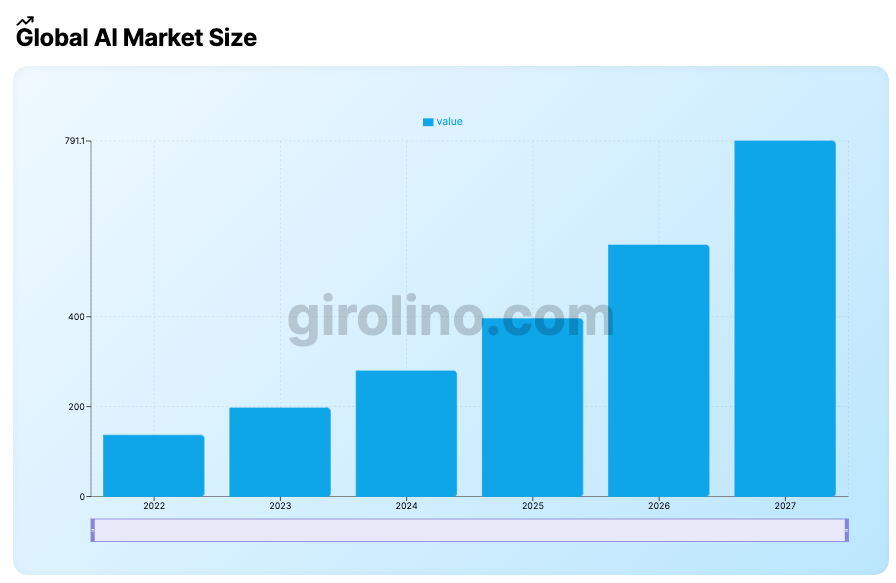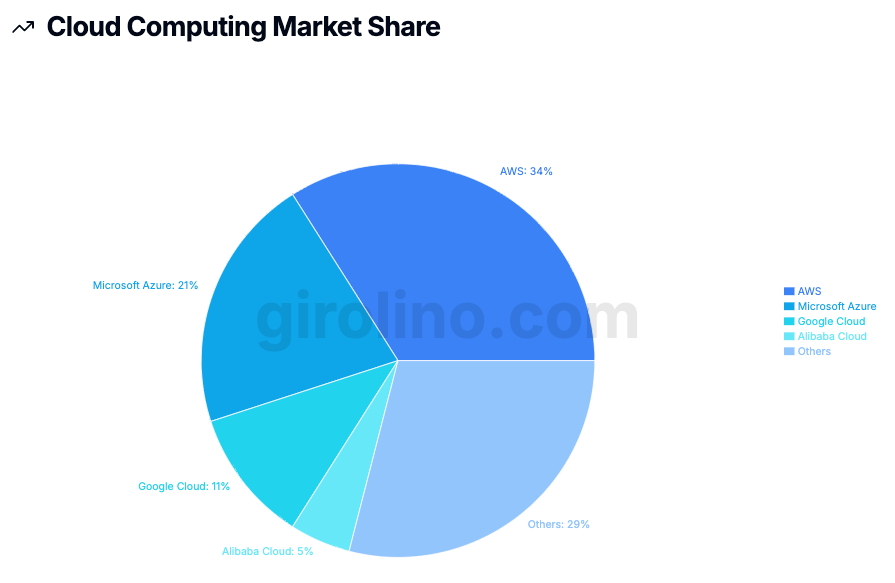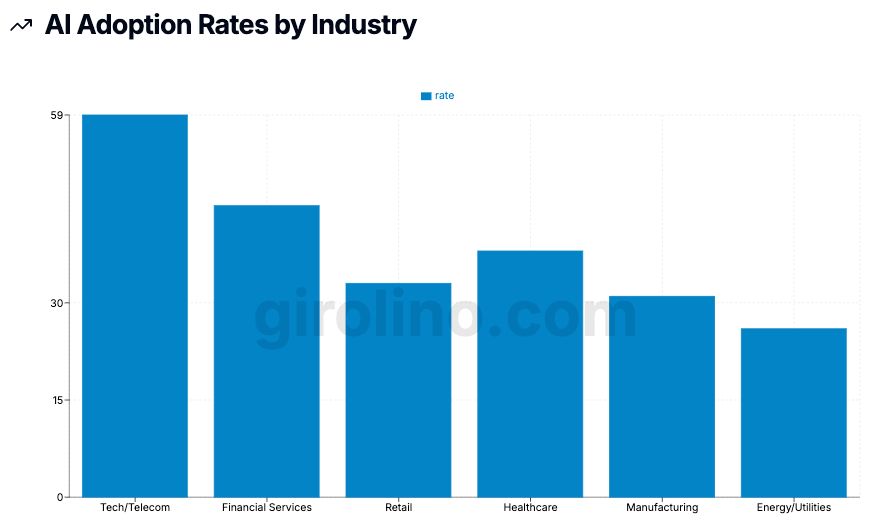In today's rapidly evolving technological landscape, the convergence of artificial intelligence (AI) and cloud computing has emerged as a game-changing force, revolutionizing how businesses operate and innovate. This powerful combination is not just reshaping industries; it's redefining the very essence of efficiency and productivity in the digital age. Let's dive deep into the world of AI cloud computing and explore how it's maximizing efficiency across the board.
Understanding the Synergy: AI and Cloud Computing
What is Cloud AI?
Cloud AI represents the seamless integration of cloud computing infrastructure with artificial intelligence capabilities. This fusion creates a robust ecosystem where AI tools, algorithms, and services can be deployed and utilized at scale. By leveraging the vast processing power and storage capabilities of the cloud, organizations can harness the full potential of AI technologies like machine learning, natural language processing, and computer vision.

The global AI market is projected to grow from $137B in 2022 to $791B in 2027. This represents a compound annual growth rate (CAGR) of over 40% during this period.
The beauty of Cloud AI lies in its ability to process enormous datasets rapidly and efficiently, uncovering patterns and insights that would be impossible to discern through traditional methods. This capability is transforming how businesses approach problem-solving, decision-making, and innovation.
The Symbiotic Relationship
The relationship between AI and cloud computing is truly symbiotic. While AI provides the intelligence and analytical prowess, cloud computing offers the necessary infrastructure and resources. Here's why they work so well together:
- Scalability: Cloud platforms provide the elasticity needed to scale AI operations up or down based on demand, ensuring optimal resource utilization.
- Accessibility: Cloud-based AI services democratize access to advanced AI capabilities, allowing businesses of all sizes to leverage these technologies without significant upfront investments.
- Data Management: Cloud environments offer robust data storage and management solutions, crucial for training and operating AI models effectively.
- Computational Power: The cloud's vast computational resources enable the training and deployment of complex AI models that would be impractical on local hardware.
Transforming Business Operations with AI Cloud Computing
Automating for Efficiency
One of the most significant impacts of AI in cloud computing is the automation of repetitive and time-consuming tasks. This automation extends far beyond simple rule-based processes, encompassing complex operations that traditionally required human intervention.

- AWS leads the cloud computing market with a 34% share.
- The top 4 providers (AWS, Azure, Google, Alibaba) control 71% of the market.
- Other providers collectively hold a significant 29% market share, indicating a diverse ecosystem.
Intelligent Automation in Action
- Data Processing: AI algorithms can automatically categorize, analyze, and extract insights from vast amounts of unstructured data stored in the cloud.
- Resource Management: Cloud platforms like Google Cloud use AI to optimize resource allocation, ensuring that computing power is distributed efficiently across various tasks and applications.
- Predictive Maintenance: By analyzing patterns in machine performance data, AI can predict when equipment is likely to fail, allowing for proactive maintenance and minimizing downtime.
Enhancing Decision-Making with AI-Driven Insights
The combination of AI and cloud computing is revolutionizing how businesses make decisions. By processing and analyzing vast amounts of data in real-time, AI cloud solutions provide actionable insights that drive informed decision-making.
Key Benefits:
- Real-time Analytics: Cloud AI enables the processing of streaming data, allowing businesses to react quickly to changing market conditions or customer behaviors.
- Predictive Analytics: AI models can forecast trends, customer preferences, and potential risks, empowering businesses to make proactive decisions.
- Personalization at Scale: AI algorithms can analyze individual user data to deliver personalized experiences, recommendations, and services to millions of customers simultaneously.
Optimizing Cloud Infrastructure with AI
Intelligent Resource Allocation
AI is not just a beneficiary of cloud computing; it's also a powerful tool for optimizing cloud infrastructure itself. Through intelligent resource allocation, AI enhances the overall performance of cloud services while contributing to significant cost savings.
How AI Optimizes Cloud Resources:
- Workload Prediction: AI models analyze historical data to predict future workload demands, allowing for proactive scaling of resources.
- Dynamic Resource Allocation: Based on real-time demand and usage patterns, AI can automatically adjust resource allocation, ensuring optimal performance without over-provisioning.
- Energy Efficiency: AI algorithms can optimize data center operations, reducing energy consumption and contributing to more sustainable cloud computing practices.
Enhancing Cloud Security
In an era where cyber threats are becoming increasingly sophisticated, AI plays a crucial role in bolstering cloud security. By analyzing vast amounts of data and identifying patterns indicative of potential threats, AI-powered security systems can provide robust protection for cloud environments.
AI-Driven Security Measures:
- Anomaly Detection: AI algorithms can identify unusual patterns in network traffic or user behavior that may indicate a security breach.
- Automated Threat Response: When potential threats are detected, AI systems can initiate automated responses to mitigate risks in real-time.
- Continuous Learning: AI security systems continuously learn from new data, adapting to evolving threats and improving their detection capabilities over time.
Practical Applications of AI in Cloud Computing
Revolutionizing SaaS with AI
The integration of AI into Software as a Service (SaaS) platforms is creating a new generation of intelligent, adaptive applications. These AI-enhanced SaaS tools are providing unprecedented value to businesses across various sectors.

- Tech/Telecom leads in AI adoption with a 59% adoption rate.
- Financial Services and Retail follow closely with 45% and 32% adoption rates respectively.
- Energy/Utilities show the lowest adoption rate at 26%, indicating potential for growth.
Examples of AI-Powered SaaS:
- CRM Systems: Platforms like Salesforce's Einstein use AI to provide predictive lead scoring, automated data entry, and personalized customer interactions.
- Marketing Automation: AI-driven marketing tools can optimize campaign timing, personalize content, and predict customer behaviors to improve engagement and conversion rates.
- Financial Management: AI-enhanced financial software can automate complex accounting tasks, detect fraudulent activities, and provide predictive financial modeling.
Edge Computing and AI: Bringing Intelligence Closer to Data
The convergence of edge computing and AI is pushing the boundaries of what's possible in cloud computing. By processing data closer to its source, edge AI enables faster decision-making and reduces the latency associated with cloud-based processing.
Benefits of Edge AI:
- Real-time Processing: Critical for applications like autonomous vehicles or industrial IoT devices where split-second decisions are crucial.
- Bandwidth Optimization: By processing data locally, edge AI reduces the amount of data that needs to be sent to the cloud, optimizing network bandwidth.
- Enhanced Privacy: Sensitive data can be processed locally, addressing privacy concerns associated with sending data to the cloud.
Overcoming Challenges in AI Cloud Computing
Addressing Data Privacy and Security Concerns
While the benefits of AI cloud computing are immense, they come with significant challenges, particularly in the realm of data privacy and security. As organizations process sensitive data through cloud-based AI systems, ensuring the protection of this information becomes paramount.
Strategies for Enhancing Data Protection:
- Encryption: Implementing robust encryption protocols for data both in transit and at rest.
- Access Control: Utilizing AI-powered identity and access management systems to ensure only authorized personnel can access sensitive data.
- Data Anonymization: Employing techniques to anonymize personal data before processing, reducing the risk of individual identification.
- Compliance Frameworks: Adhering to industry-specific regulatory frameworks like GDPR, HIPAA, or CCPA to ensure data protection practices meet legal requirements.
Bridging the Skills Gap
The rapid advancement of AI and cloud technologies has created a significant skills gap in the job market. Organizations are struggling to find professionals with the right mix of cloud computing, AI, and data science expertise.
Addressing the Skills Shortage:
- Training and Development: Investing in upskilling programs for existing employees to bridge the knowledge gap.
- Partnerships with Educational Institutions: Collaborating with universities to develop curricula that align with industry needs.
- Leveraging AI-assisted Learning: Using AI-powered learning platforms to accelerate skill development among employees.
The Future of AI Cloud Computing
Emerging Trends and Predictions
As we look to the future, several trends are shaping the evolution of AI cloud computing:
- Hybrid and Multi-Cloud Environments: Organizations will increasingly adopt hybrid and multi-cloud strategies to leverage the best features of different cloud providers and maintain flexibility.
- Serverless AI: The rise of serverless computing will extend to AI workloads, allowing developers to focus on building AI applications without worrying about infrastructure management.
- AI-Optimized Hardware: Cloud providers will continue to develop specialized hardware optimized for AI workloads, improving performance and energy efficiency.
- Explainable AI: As AI systems become more complex, there will be a growing emphasis on developing explainable AI models that can provide insights into their decision-making processes.
- Quantum AI: The intersection of quantum computing and AI will open up new possibilities for solving complex problems that are currently intractable.
Preparing for the AI-Driven Future
To stay competitive in this rapidly evolving landscape, businesses need to:
- Develop a clear AI strategy aligned with their business goals
- Invest in building a robust data infrastructure to support AI initiatives
- Foster a culture of continuous learning and innovation
- Stay informed about emerging AI and cloud technologies
- Prioritize ethical considerations in AI development and deployment
FAQ: AI Cloud Computing
How does AI improve cybersecurity in cloud computing?
AI enhances cloud cybersecurity by continuously monitoring network traffic, detecting anomalies, and responding to threats in real-time. It can analyze vast amounts of data to identify patterns indicative of cyber attacks, often catching threats that traditional security measures might miss.
What is edge AI, and how does it relate to cloud computing?
Edge AI refers to the deployment of AI algorithms on edge devices (like smartphones or IoT sensors) rather than in the cloud. It complements cloud computing by enabling real-time processing and decision-making at the data source, reducing latency and bandwidth usage while enhancing privacy.
How can small businesses leverage AI cloud computing?
Small businesses can take advantage of AI cloud computing through:
- Using AI-powered SaaS tools for various business functions
- Leveraging cloud-based AI services for data analysis and customer insights
- Implementing chatbots and virtual assistants for customer service
- Utilizing AI-driven marketing tools for personalized campaigns
What are the environmental implications of AI cloud computing?
While AI and cloud computing can be energy-intensive, they also offer opportunities for environmental benefits:
- AI can optimize data center operations, reducing energy consumption
- Cloud computing enables resource sharing, potentially leading to more efficient use of hardware
- AI can be used to model and predict environmental impacts, aiding in sustainability efforts
How does machine learning differ from AI in cloud computing?
Machine learning is a subset of AI. In cloud computing:
- AI refers to the broader concept of machines mimicking human intelligence
- Machine learning specifically involves algorithms that improve through experience
- Cloud-based AI services often utilize machine learning models as part of their functionality
Conclusion: Embracing the AI Cloud Revolution
The integration of AI and cloud computing represents a paradigm shift in how businesses operate and innovate. By harnessing the power of AI cloud computing, organizations can unlock unprecedented levels of efficiency, insight, and competitive advantage.
As we've explored, the benefits are far-reaching:
- Automated processes that save time and reduce errors
- Data-driven insights that inform strategic decision-making
- Enhanced security measures that protect valuable assets
- Scalable solutions that grow with your business
However, the journey to fully leveraging AI cloud computing is not without its challenges. Organizations must navigate issues of data privacy, address skills gaps, and stay abreast of rapidly evolving technologies.
The future of AI cloud computing is bright, with emerging trends like edge AI, serverless computing, and quantum AI promising even greater advancements. By embracing this technology and preparing for the AI-driven future, businesses can position themselves at the forefront of innovation, ready to tackle the challenges and opportunities of tomorrow's digital landscape.
As we stand on the brink of this technological revolution, one thing is clear: the power of AI and cloud computing to maximize efficiency is not just a competitive advantage—it's becoming a necessity for survival and success in the digital age.




